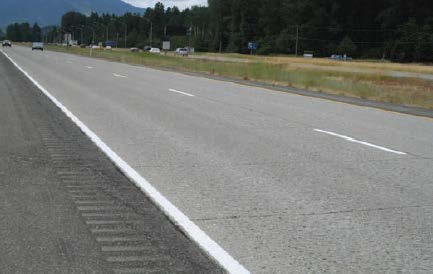TRANSPORTATION RESEARCH BOARD
Executive Summary
 This report documents the findings from the second Strategic Highway Research Program (SHRP 2) R23 project, Using Existing Pavement in Place and Achieving Long Life. This project falls within the SHRP 2 Renewal area, which focuses on improving the ability of highway agencies to design and construct long-lasting highway projects with minimal disruption to the traveling public. The project found that construction costs and time can be greatly reduced if the existing pavement can be used in place for part of the rehabilitation solution.
This report documents the findings from the second Strategic Highway Research Program (SHRP 2) R23 project, Using Existing Pavement in Place and Achieving Long Life. This project falls within the SHRP 2 Renewal area, which focuses on improving the ability of highway agencies to design and construct long-lasting highway projects with minimal disruption to the traveling public. The project found that construction costs and time can be greatly reduced if the existing pavement can be used in place for part of the rehabilitation solution.
The goal of this project was to develop reliable procedures that identify when existing pavements can be used in place and what methods are necessary for incorporating the original material into the new pavement structure while achieving long life. SHRP 2 has defined “long-life pavements” as those lasting in service for 50 years or longer without needing major rehabilitation. This project concentrated on understanding the state of the art of rapid renewal approaches currently used either nationally or internationally to construct long-lived pavement for high-volume roadways.
Through literature reviews, industry reviews, international surveys, and extensive interactions with numerous state highway agencies (SHAs), this project developed a list of renewal alternatives that use the existing pavement in place. The list of alternatives included not only composite pavement sections but also both flexible and rigid pavements. Project and performance records from the SHAs and numerous site visits were used to gather valuable information about each renewal alternative. Data on pavement performance captured in the Long-Term Pavement Performance (LTPP) database and detailed analyses of those data using the Mechanistic-Empirical Pavement Design Guide (MEPDG), PerRoad, and other analytical tools were used to evaluate the advantages and disadvantages of each approach under different site conditions and the features critical to achieving long life. From these analyses, criteria on when an existing pavement could be used in place were established. The project team also considered situations where modification of the existing pavement structure would be needed before renewal activities to ensure long life.
Download the Full Version (PDF): Using Existing Pavement in Place and Achieving Long Life
About the Transportation Research Board
www.trb.org
The mission of the Transportation Research Board (TRB) is to promote innovation and progress in transportation through research. In an objective and interdisciplinary setting, TRB facilitates the sharing of information on transportation practice and policy by researchers and practitioners; stimulates research and offers research management services that promote technical excellence; provides expert advice on transportation policy and programs; and disseminates research results broadly and encouraged their implementation.
Tags: National Academies, SHRP, Strategic Highway Research Program 2, Transportation Research Board, TRB, TRB of NA






 RSS Feed
RSS Feed